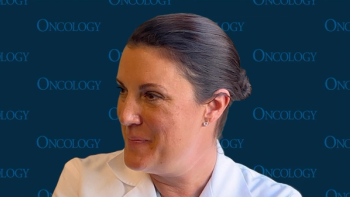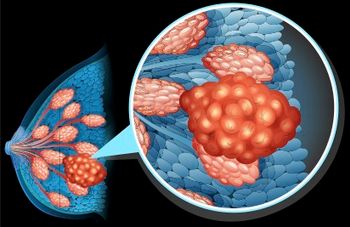
Aromatase Inhibitor Side Effects No Surrogate for Efficacy in Breast Cancer
A large trial showed that treatment-emergent vasomotor and/or joint symptoms do not correlate with any improvement in recurrence-free survival in postmenopausal breast cancer patients treated with aromatase inhibitors.
A large trial showed that treatment-emergent vasomotor and/or joint symptoms do not correlate with any improvement in recurrence-free survival in postmenopausal breast cancer patients treated with aromatase inhibitors (AIs). This contradicts earlier work suggesting symptoms could potentially be considered a marker of treatment efficacy.
“If treatment-emergent symptoms are indeed associated with improved breast cancer outcomes, clinicians and patients can use the information to make important decisions regarding persistence of chronic AI therapy,” wrote study authors led by Paul E. Goss, MD, PhD, of Massachusetts General Hospital in Boston. Results of the new trial were
The MA.27 trial randomized 7,576 postmenopausal women with breast cancer to 5 years of anastrozole or exemestane. Of that cohort, 96% (7,306 patients) were included at 6 months, and 96% were included at 12 months (7,246 patients).
Of the assessable patients, 34% had baseline vasomotor and/or joint symptoms; among those without baseline symptoms, 25% had new symptoms at 6 months, and 52% had new symptoms at 12 months. The development of such new vasomotor and/or joint symptoms did not appear to affect recurrence-free survival (RFS) in any subgroup or at any time point.
Specifically among the 5,645 patients without baseline vasomotor symptoms or grade 3/4 musculoskeletal symptoms, the hazard ratio (HR) for RFS was 0.80 at 6 months (95% CI, 0.59-1.07; P = .1323) and 0.81 at 12 months (95% CI, 0.63-1.03; P = .0894). In multivariate models stratifying patients by use of celecoxib, aspirin, and trastuzumab, and by lymph node status and prior chemotherapy, new or worsening vasomotor or joint symptoms still did not have any effect on RFS (P > .10).
The authors wrote that further trials will be needed to resolve these negative results with opposite signals in the past. “Until then, treatment-emergent symptoms should be managed as effectively as possible to support treatment continuation, and it is premature to counsel patients on whether to continue or change their adjuvant AI therapy based on symptoms.”
In an
Newsletter
Stay up to date on recent advances in the multidisciplinary approach to cancer.


















































































